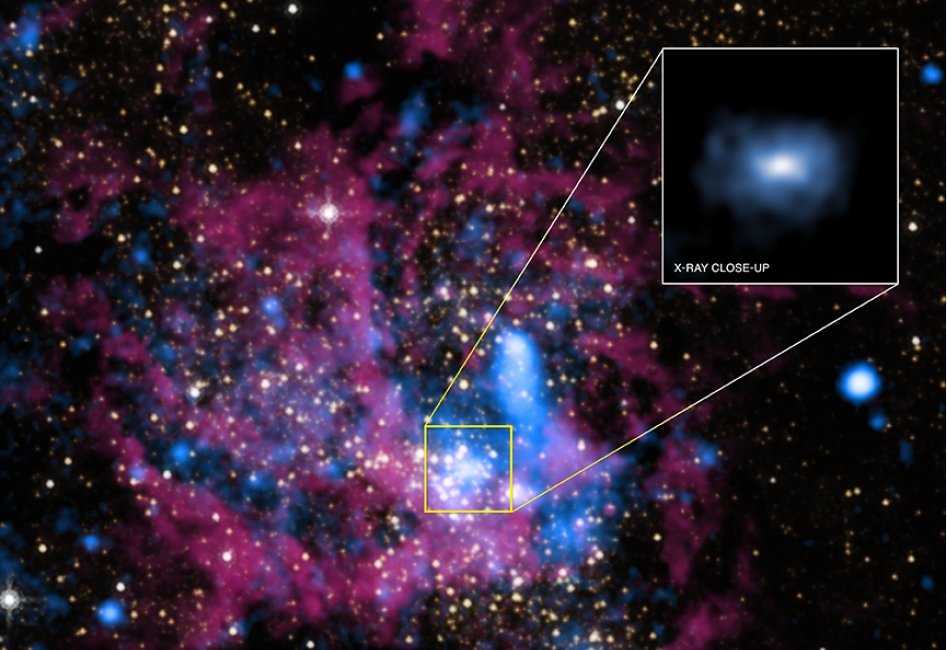Science News
Gas Cloud Gets Spaghettified
November 13, 2013
by Alyssa Keimach

What if you could travel 25,000 light years to the
center of the Milky Way galaxy, to pay a visit to our very own supermassive black hole, Sagittarius A*? (To sound like an astronomer, BTW, pronounce the asterisk as “star.” Thus, “Sagittarius A-star,” or “Sadge A-star” for short.) Sound like fun? Well, be warned that if you got too close, you could end up getting spaghettified! Which means you’d be stretched thin by the difference in gravity between your head and your feet, increasingly resembling the skinny Italian pasta as you met your demise. It sounds pretty crazy, but it’s happening to a cloud of gas right now.
Supermassive black holes can be as massive as billions of suns, and astronomers find these bizarre objects at the centers of most galaxies. The extreme gravitational fields around the black holes create a steep gravitational gradient—matter experiences a stronger force at closer proximities, and as a result, it stretches out like spaghetti.
Sagittarius A* lives at the center of our galaxy, inconveniently located for detailed observation: In the busy galactic center, obscuring gas and dust make it difficult for us to see what’s going on, especially from our vantage point 25,000 light years away. But in December 2011, ESO’s Very Large Telescope (VLT) discovered a gas cloud accelerating towards this black hole. Astronomers predicted that the cloud, named G2, would make its closest approach in mid-2013. They were right.
Stefan Gillessen of the Max Planck Institute for Extraterrestrial Physics explains, “The cloud is so stretched that the close approach is not a single event but rather a process that extends over a period of at least one year.” Astronomers get to watch the cloud undergo its radical transformation!
But as time passes, the cloud is stretched so much that its light becomes hard to see. “The gas at the head of the cloud is now stretched over more than 160 billion kilometers around the closest point of the orbit to the black hole. And the closest approach is only a bit more than 25 billion kilometers from the black hole itself — barely escaping falling right in,” said Gillessen. To watch G2’s literal death spiral, we actually have to look at images taken using 20 hours of total exposure time.
Real-time demolition may be invisible, but we can still measure real-time speed. “The most exciting thing we now see in the new observations is the head of the cloud coming back towards us at more than 10 million kilometers per hour along the orbit — about 1% of the speed of light. This means that the front end of the cloud has already made its closest approach to the black hole,” says Reinhard Genzel, part of the team studying G2.
If this black hole’s feast doesn’t discourage future black hole journeys, then nothing will. But as we learn about the effects of super-strong gravity, at least we will know what we are getting ourselves into. Check out a model of the gas cloud here!
Alyssa Keimach is an astronomy and astrophysics student at the University of Michigan and interns for Morrison Planetarium.
Image: NASA